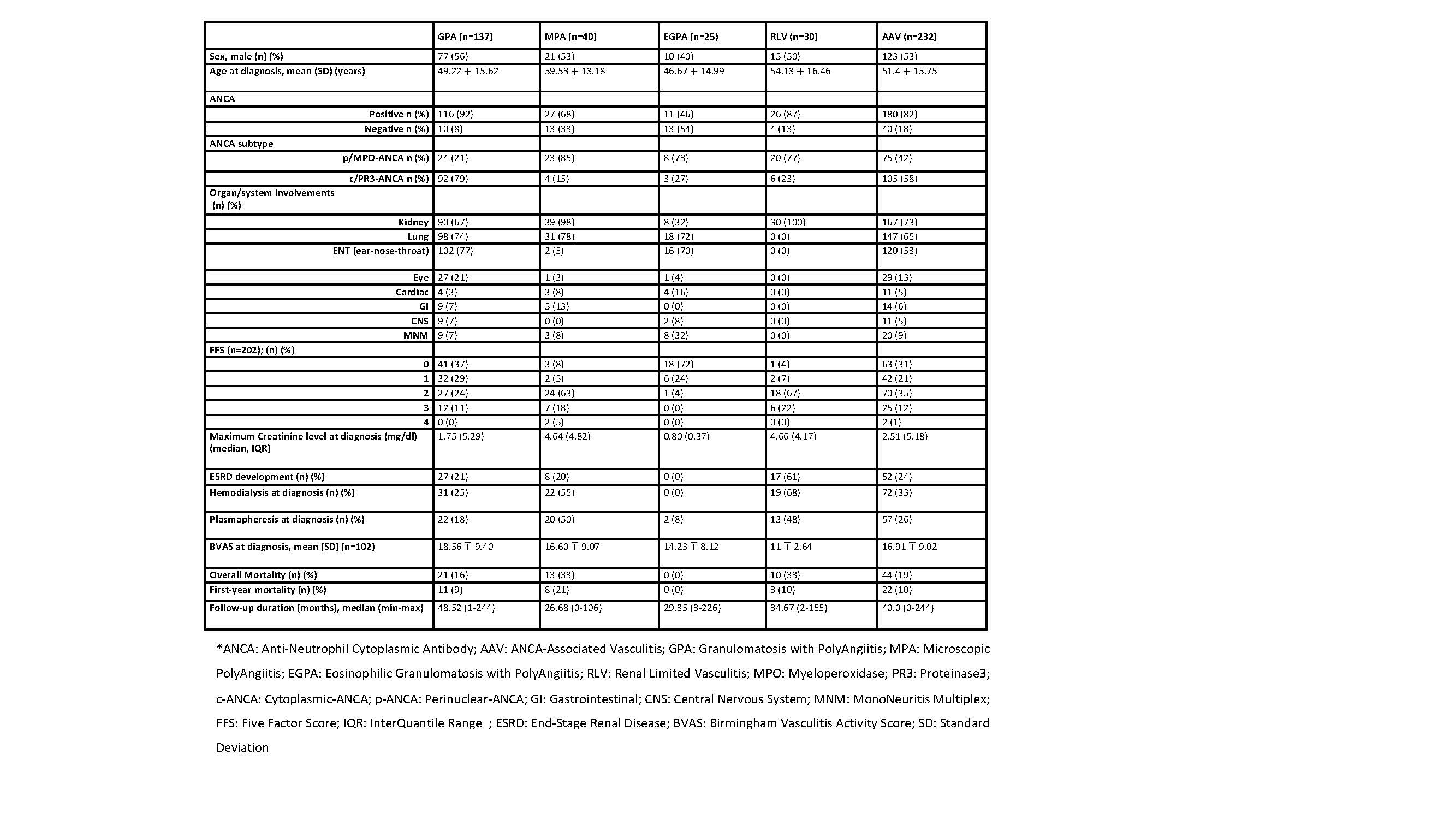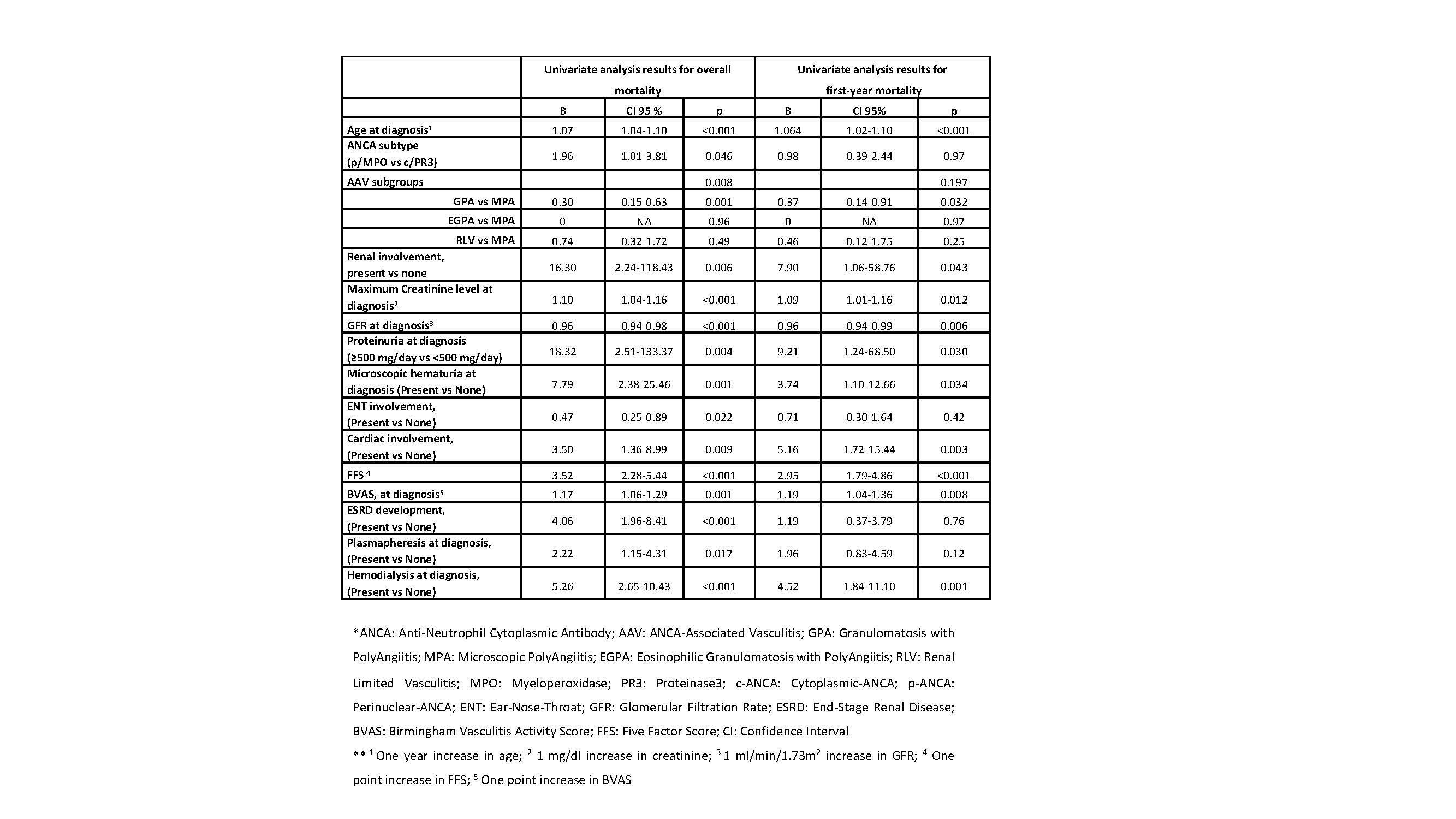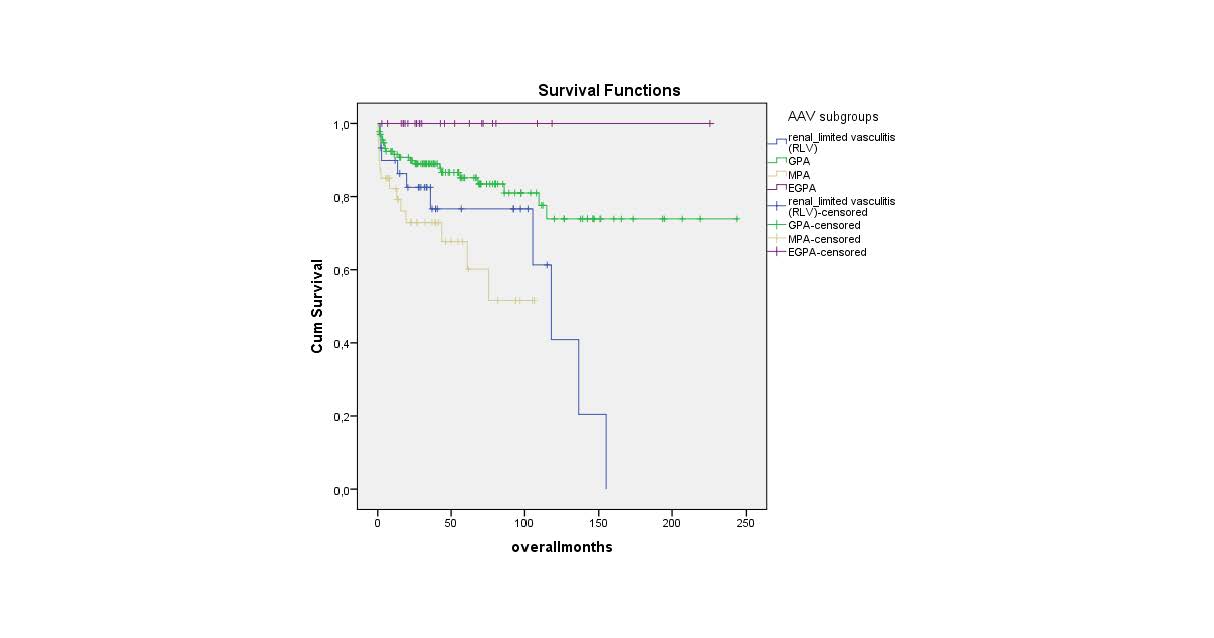Session Information
Session Type: Poster Session (Monday)
Session Time: 9:00AM-11:00AM
Background/Purpose: Overall mortality in ANCA-associated vasculitides (AAVs) over the last two decades has been reported to be decreasing with the use of immunosuppressive therapies. However, despite treatment, mortality rates remain high, particularly in the first year after diagnosis. In this study, we aimed to determine the prevalence of mortality in AAV patients and to investigate the factors that may be associated with first-year and overall mortality.
Methods: AAV patients who were categorized according to the 2012 Chapel Hill consensus nomenclature, were included in this study from two university centers. Diagnostic subgroups were; granulomatosis with polyangiitis (GPA), microscopic polyangiitis (MPA), eosinophilic granulomatosis with polyangiitis (EGPA) and renal-limited vasculitis (RLV). Patients with only clinical renal involvement and diagnosed by renal biopsy were classified as RLV. The clinical and demographic characteristics of the patients were collected retrospectively. Factors predictive of mortality were evaluated by Kaplan-Meier method and the Cox proportional hazard model.
Results: In total 232 (123 [53%] male and mean age at diagnosis51.4±15.75 years) AAV patients (137 [59%] GPA; 40 [17%] MPA; 30 [13%] RLV and 25 [11%] EGPA) were included in the analysis. ANCA positivity was detected in 82% (180/220) patients with IIF and/or ELISA. 167 patients (73%) had renal involvement and among them, one in third patients (52/167) had developed end-stage renal disease (ESRD). Other clinical features are shown in table 1. Overall 44 patients (19%) died during a median 40 months (0-244) of follow-up. First-year and five-year mortality rates were 10% and 30% respectively. Overall mortality was significantly different in AAV subgroups (p< 0.001, Figure). Factors associated with overall and first-year mortalities that were detected with univariate analysis, including disease activity scores (Five Factor Score [FFS] and Birmingham Vasculitis Activity Score [BVAS]), are summarized in table 2. In the multivariate analysis age at diagnosis (Hazard ratio [HR] 1.05, 95 % Confidence interval [CI] 1.01-1.08, p=0.002) and cardiac involvement (HR 6.79, 95 % CI 1.97-23.32, p=0.002) were found to be the independent predictive factors of overall mortality. The same factors were also predictors of the first-year mortality (Age at diagnosis [HR 1.06, 95 % CI 1.02-1.10, p=0.001] and cardiac involvement [HR 5.45, 95 % CI 1.81-16.40, p=0.003]).
Conclusion: Our findings suggest that there could be some survival differences between AAV subgroups and, disease activity scores (both FFS and BVAS at diagnosis) are helpful to predict mortality. However, the age at diagnosis and cardiac involvement seems to be the only significant predictors of first-year and overall mortality in AAV patients.
« Back to 2019 ACR/ARP Annual Meeting
ACR Meeting Abstracts - https://acrabstracts.org/abstract/factors-associated-with-overall-and-first-year-mortality-in-turkish-patients-with-anca-associated-vasculitides-retrospective-multicentre-trial/



